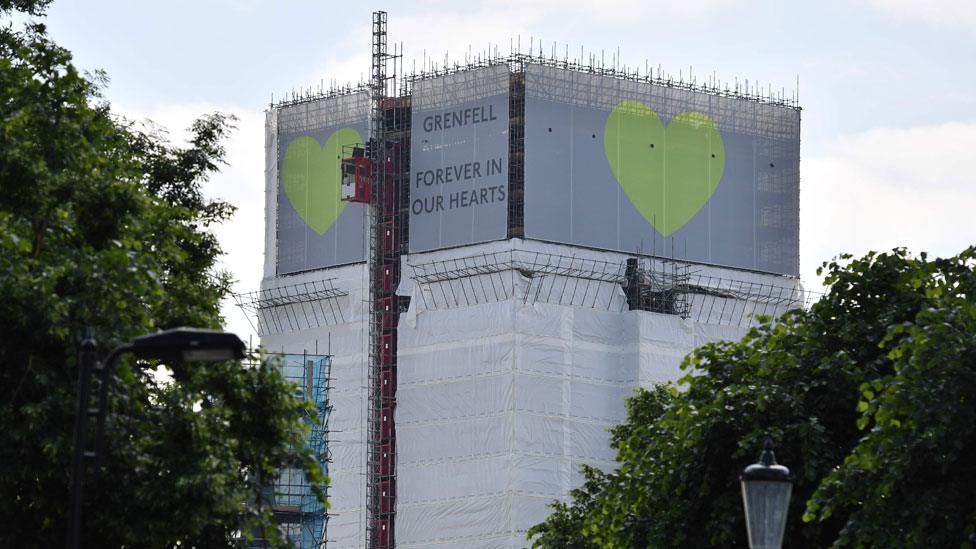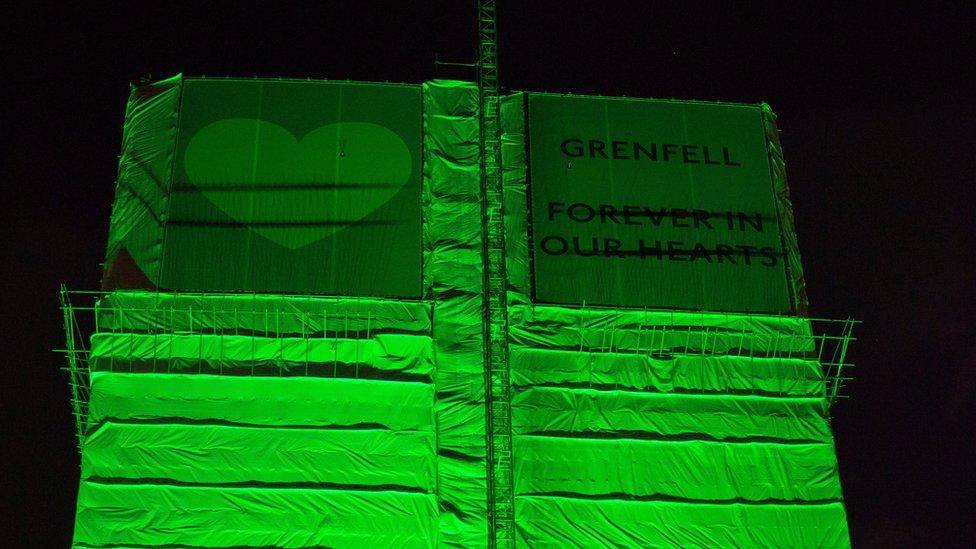Grenfell Inquiry: Kitchen fire spread to cladding in 10 minutes
- Published

The advice for Grenfell Tower residents to stay in their flats should have been reconsidered once the fire reached the outside, which took just 10 minutes.
The Grenfell Inquiry heard the small kitchen fire broke out through a uPVC window fitting, igniting the cladding.
Professor Jose Torero, a fire safety expert, said from that moment "the stay-put strategy was compromised" and evacuation should have been considered.
The disaster, in west London on 14 June 2017, killed 72 people.
Prof Torero's report for the inquiry said the blaze probably set fire to one of the flammable components of the cladding 11 minutes after the fire started.
That was before firefighters had entered the fourth-floor flat 16.
'Fire had been localised'
Flames then spread up the east side of the building, as showed in a video montage played at the inquiry.
"Analysis indicates that a relatively minor, localised fire compromised the uPVC window fittings and ignited one of the flammable components of the cladding by direct flame/plume impingement," Prof Torero wrote.
"From this point forward, the stay-put strategy was compromised and evacuation of occupants was an option to consider."

Images from the kitchen of flat 16 show the positioning of the kitchen appliances and the window
He said such a kitchen fire in a high-rise residential building was an "inevitable and perfectly foreseeable event" but should have been contained.
"Fires are common events, but fires that create significant damage are rare events," he said.
"The building is required to respond and deliver... so that a fire of this nature does not progress beyond a kitchen."
'Only viable option'
Prof Torero - who is John L. Bryan chair at the Department of Fire Protection Engineering and the director of the Centre for Disaster Resilience at the Department of Civil Engineering at the University of Maryland, in the US - said there was a high probability of any fire starting near a window at Grenfell Tower spreading to the cladding.
Compartmentation, a design feature dividing a building into different areas which is intended to stop fire spreading, had failed by 1.05am that day, he added.
By 1.11am, it would have been obvious to firefighters that the outside of the building was burning.
Kate Grange QC, counsel for the inquiry, asked: "Would you agree that once compartmentation is breached, evacuation is necessary to secure the fire safety of those in the building?"
Prof Torero confirmed that was the case, and indeed the only viable option at that point.
The London Fire Brigade did not change its advice to stay put until 2.47am. Only 36 people managed to escape after that point.
The inquiry has previously heard that the advice to stay put should have worked if "the building have done what it was supposed to have done".
- Published20 November 2018

- Published19 November 2018

- Published13 November 2018

- Published19 June 2018
